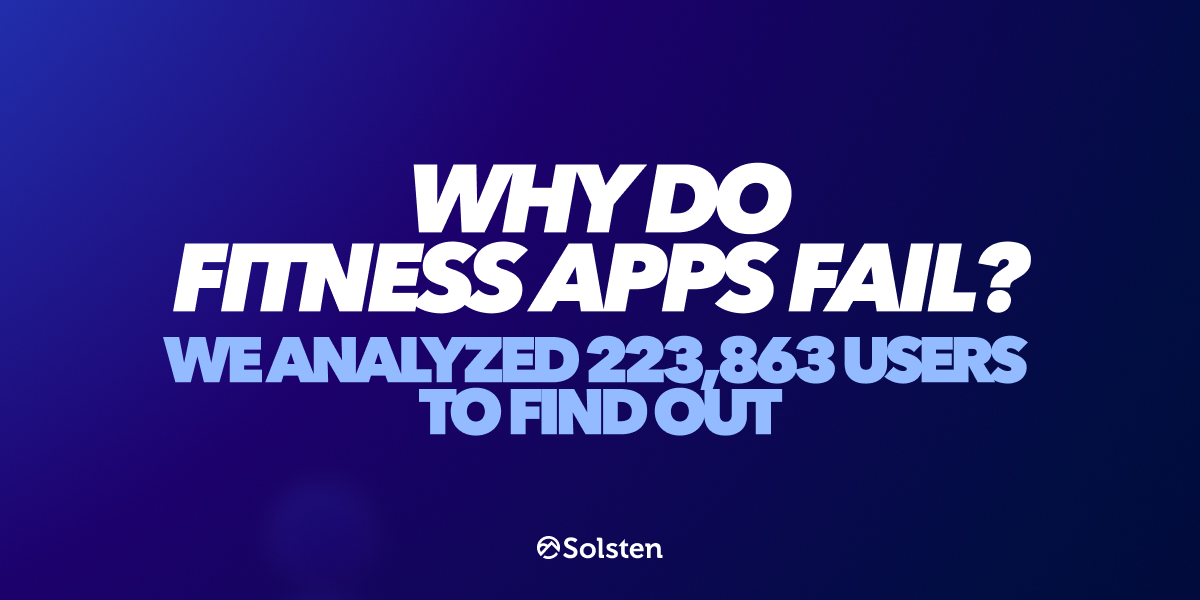Summarize this article with AI:
💬 ChatGPT
🔍 Perplexity
🤖 Claude
🔮 Google AI Mode
🧠 Elaris
Most fitness brands burn millions targeting “fitness enthusiasts” as one group. They’re not.
The data tells a different story. We analyzed 223,863 fitness app users and found five completely different psychological types hiding under that single label. Each type wants different things, responds to different messaging, and stays loyal for different reasons.
The numbers are brutal: 71% of fitness app users quit by month three. Even successful brands hit growth walls after their initial surge. This is happening because they’re speaking to an audience that doesn’t exist.
Here’s what we found when we dug into the psychology behind fitness motivation.
Our Analysis Method
We used Elaris‘s psychological database to profile 223,863 verified fitness enthusiasts across 250 countries. The assessment measures over 300 psychological traits through scientifically validated methods, going far beyond basic demographics to understand what actually drives behavior.
The sample included users from major markets: United States, United Kingdom, Canada, Germany, Japan, Australia, Netherlands, Russia, Mexico, and Brazil. All data was collected with consent and anonymized for analysis.
You can access this exact audience data for free through Elaris right now.
The Five Types (And What Each One Actually Wants)
Type 1: The Competitor (28% of fitness enthusiasts)
Psychological signature:
- Competitiveness: 78th percentile
- Status orientation: 82nd percentile
- Metrics obsession: 89th percentile
What drives them: Beating yesterday’s performance. Visible progress. Leaderboards. Personal records.
Content that works: Progress transformations, workout challenges, PR celebrations. For example, “30-Day Strength Challenge – Track Your PRs.”
Product features they need: Progress tracking, achievement badges, leaderboards, social sharing tools. Think Strava’s gamification approach.
Marketing that resonates: Performance metrics, before/after results, competitive messaging. Nike’s “Just Do It” works because it speaks to achievement psychology.
Type 2: The Community Builder (22% of fitness enthusiasts)
Psychological signature:
- Social motivation: 91st percentile
- Group affiliation needs: 87th percentile
- Accountability-driven: 85th percentile
What drives them: Belonging. Shared experiences. Workout buddies. Group energy.
Content that works: Group workouts, community building, accountability partnerships. For example, “Find Your Workout Buddy.”
Product features they need: Group challenges, workout matching, community forums, shared goal tracking. Peloton built an empire on this insight.
Marketing that resonates: Social proof, group experiences, community testimonials. CrossFit’s community-first approach captures this psychology perfectly.
Type 3: The Wellness Seeker (18% of fitness enthusiasts)
Psychological signature:
- Mind-body connection: 94th percentile
- Balance orientation: 88th percentile
- Internal motivation: 92nd percentile
What drives them: Holistic health. Stress relief. Mindful movement. Life balance.
Content that works: Stress relief through fitness, work-life balance, mindful movement. “Yoga for Stress Relief” is a good example.
Product features they need: Meditation integration, stress tracking, balance metrics, mindfulness reminders. Headspace’s fitness expansion targets this psychological overlap.
Marketing that resonates: Balance messaging, stress relief benefits, holistic health focus. Lululemon’s lifestyle positioning captures this mindset.
Type 4: The Status Symbol (21% of fitness enthusiasts)
Psychological signature:
- Status orientation: 85th percentile
- Social validation needs: 83rd percentile
- Premium brand affinity: 79th percentile
What drives them: Social recognition. Premium experiences. Aspirational identity. Visible success markers.
Content that works: Luxury fitness experiences, premium equipment showcases, celebrity endorsements, exclusive access.
Product features they need: Premium tiers, exclusive member benefits, high-end equipment partnerships, VIP experiences.
Marketing that resonates: Influencer partnerships, exclusivity messaging, premium lifestyle benefits.
Type 5: The Solo Operator (12% of fitness enthusiasts)
Psychological signature:
- Autonomy needs: 76th percentile
- Social motivation: 23rd percentile (low)
- Efficiency focus: 81st percentile
What drives them: Personal control. Efficient workouts. Flexible scheduling. Minimal social interaction.
Content that works: Self-guided routines, home workout options, efficient exercise methods, no-equipment solutions.
Product features they need: Flexible scheduling, solo workout modes, customizable routines, minimal social features.
Marketing that resonates: Convenience, flexibility, personal control, time efficiency.
Why Nike Dominates (Psychological Breakdown)
Nike shows the highest brand preference across all five types, with affinity scores ranging from 18% to 24%. This is psychological precision in action, and it’s no accident.
Nike’s cross-segment strategy:
Transformation messaging: “Just Do It” appeals to the high drive for transformation (66th percentile across all segments)
Community elements: Group runs and social challenges satisfy Community Builders while creating competitive opportunities for Competitors
Achievement focus: Performance metrics and competitive messaging capture the largest segment (Competitors at 28%)
Social validation: Influencer partnerships provide Status Symbols with validation while giving Competitors a competitive edge
The Adidas Approach
Adidas ranks second with 7-10% affinity across all segments through consistent psychological alignment:
- Cultural relevance: Music and fashion collaborations appeal to Status Symbols
- Community building: Running clubs target Community Builders (22% of market)
- Inclusivity messaging: Diversity focus resonates across multiple psychological types
- Style-performance balance: Appeals to both Wellness Seekers and Status Symbols
The Big Opportunity
Most fitness brands focus on demographics (age, gender, income) when psychology predicts behavior much better. Our analysis reveals three major gaps:
- Solo Operators (12%) are underserved by community-focused major brands
- Wellness Seekers (18%) want deeper mind-body connection than current offerings provide
- Status Symbols (21%) could support ultra-premium positioning above Nike/Adidas price points
Want create Marketing messaging that resonates? Check out our step-by-step tutorial and start turning insights into action today.
How to Apply This Data
Step 1: Identify your primary type
- Survey users about motivations (not just goals)
- Analyze engagement patterns across different content
- Look for psychological language in user feedback
Step 2: Align everything to that psychology
- Competitors: Metrics, competition, progress tracking
- Community Builders: Social features, group experiences
- Wellness Seekers: Balance, mindfulness, holistic health
- Status Symbols: Premium positioning, exclusivity
- Solo Operators: Flexibility, autonomy, efficiency
Step 3: Test expansion carefully
- Create separate tracks for different psychological profiles
- Develop segment-specific messaging within the same platform
- Test psychological bridges between related types
Step 4: Don’t mix messages
- Achievement and wellness messaging often conflict
- Community features can alienate Solo Operators
- Status positioning may exclude price-sensitive segments
The Bottom Line
Understanding psychological types gives you three advantages:
- Predictive power: Psychology predicts future behavior better than past actions
- Cross-demographic appeal: Find unexpected connections across age/gender lines
- Blue ocean opportunities: Spot underserved psychological segments in saturated markets
The fitness brands that win going forward will understand the psychology behind the behavior, not just the behavior itself.
Want to analyze the psychology of your specific audience? Access Elaris for free and discover which of these five types dominate your customer base.






